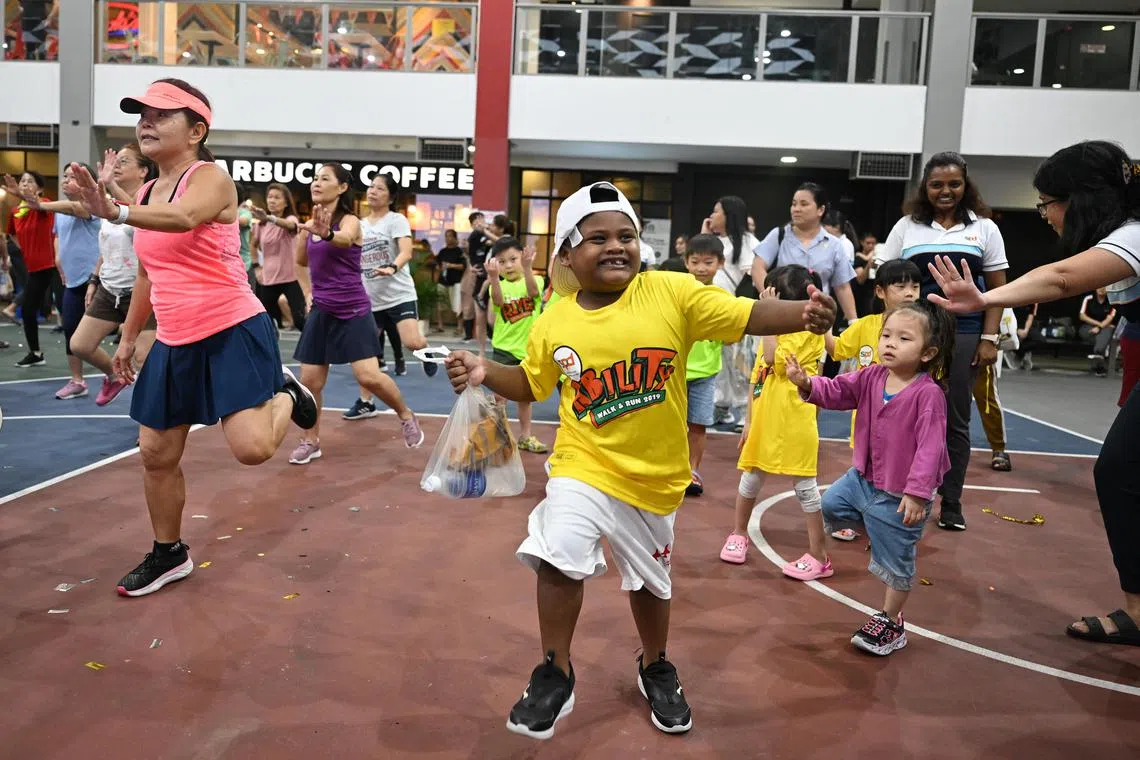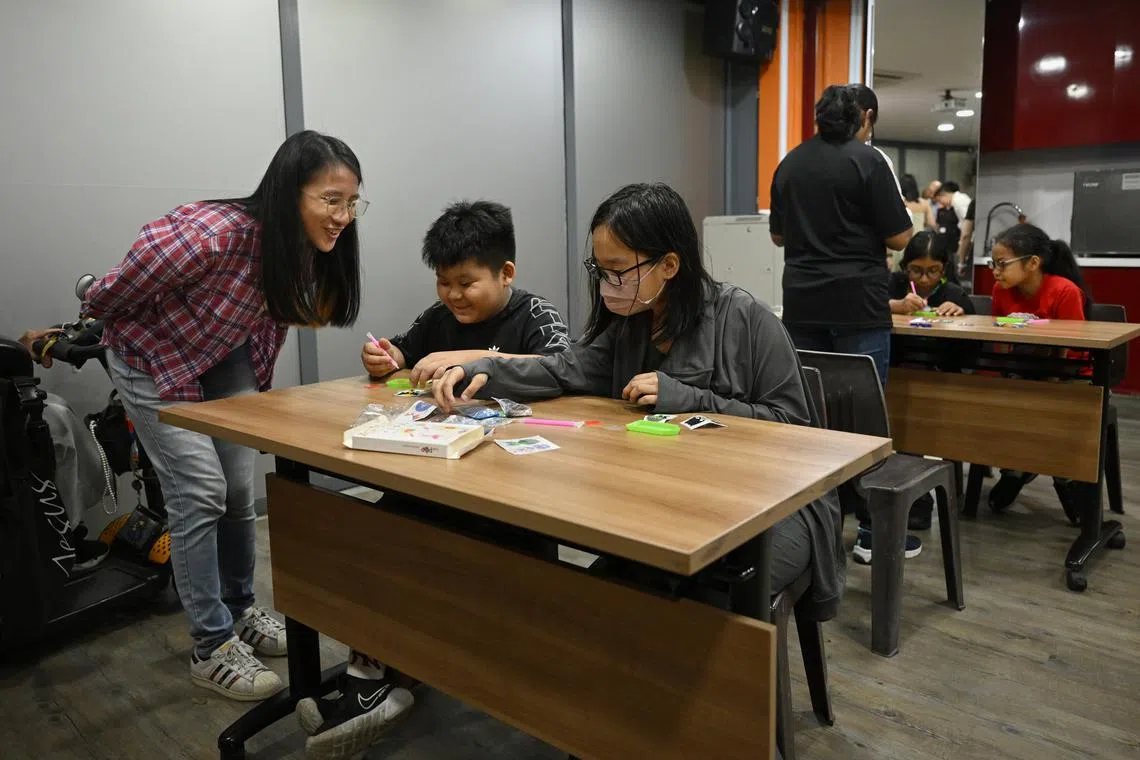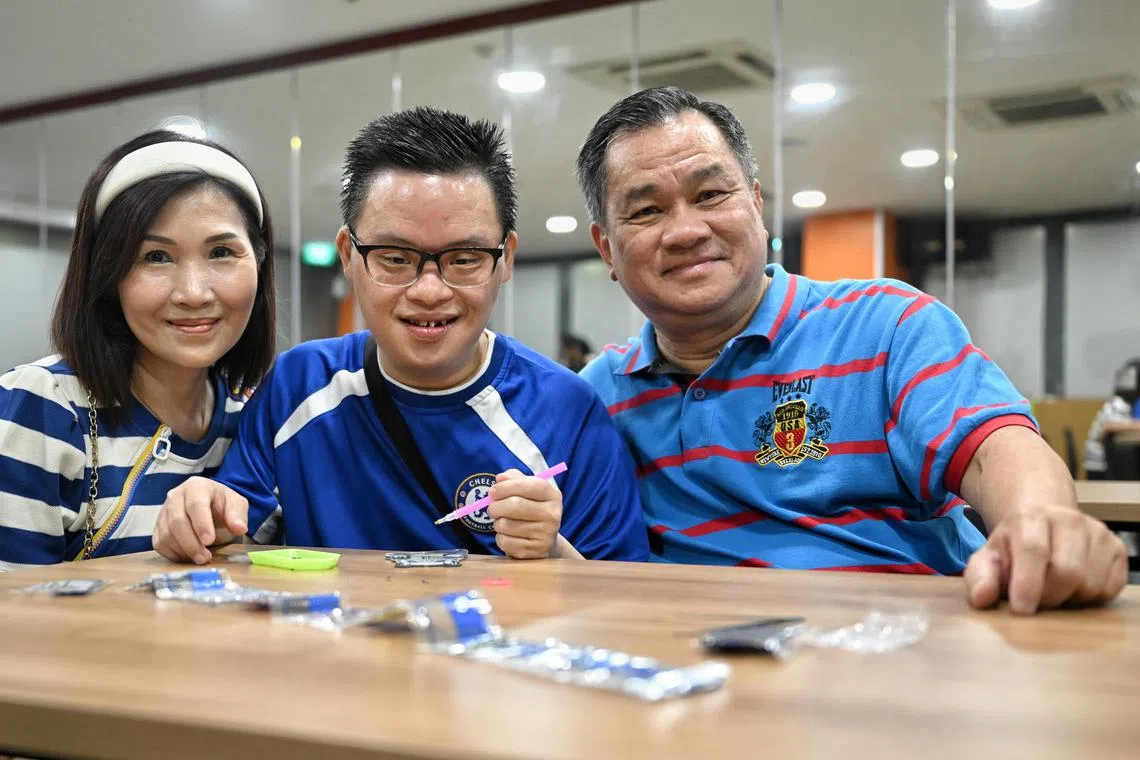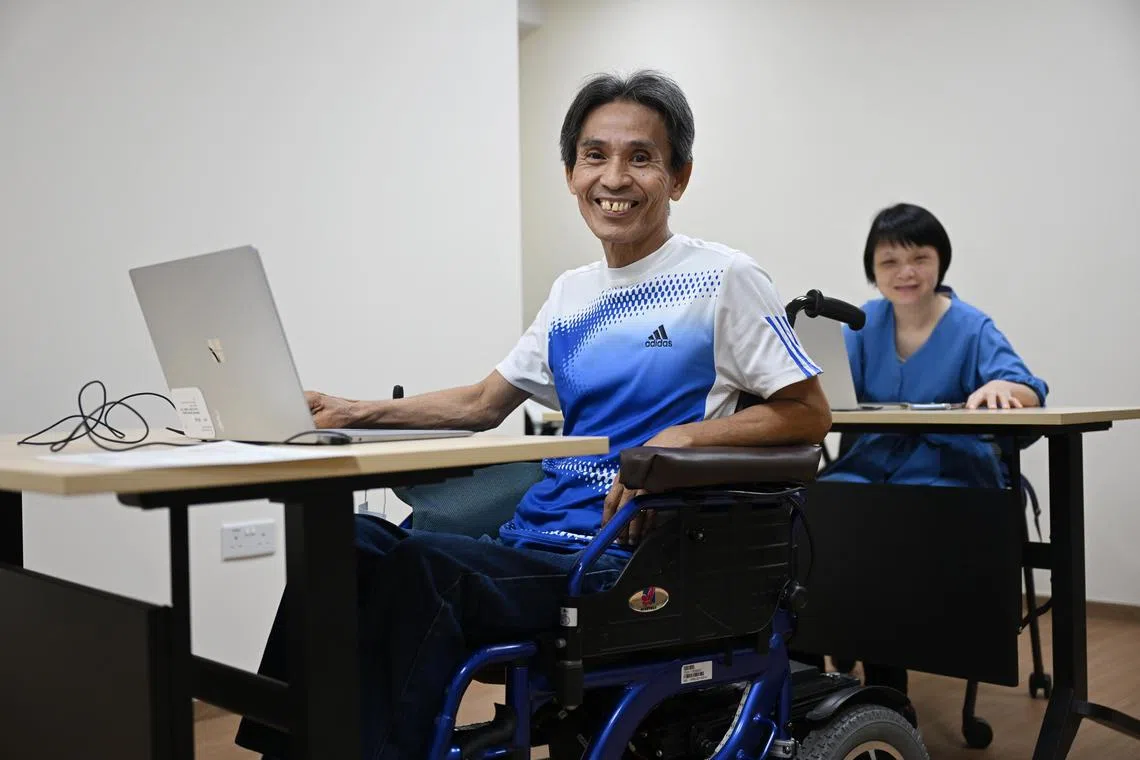New hub at Tampines West CC brings disability services closer to home
Sign up now: Get ST's newsletters delivered to your inbox

Programmes at the hub include community activities, diamond art workshops, and digital skills and money management courses.
ST PHOTO: SHINTARO TAY
Follow topic:
SINGAPORE - Tampines and Bedok residents with disabilities, as well as their caregivers, will be able to enjoy community activities and learn skills at a new hub launched at Tampines West Community Club (CC) on Monday.
The ESH@Tampines – the first of its kind in Singapore – will also provide support and training for caregivers, help build peer support networks and offer respite care services.
The ESH (Enabling Services Hub) is a joint effort by disability agency SG Enable and charity SPD. It is open to Singapore residents with disabilities aged 19 to 60 living in Tampines and Bedok, and their caregivers.
Such hubs, introduced with the aim to bring social services, employment and other activities closer to those with disabilities, are part of the Enabling Masterplan 2030,
The hubs also aim to develop a stronger ecosystem of support for persons with disabilities, from befriending services to social recreational activities and courses.
ESH@Tampines programmes include community activities such as brisk walking and low-impact aerobics, diamond art (artwork created with resin rhinestones) workshops, as well as digital skills and money management courses.
Speaking at the launch, Minister for Social and Family Development Masagos Zulkifli said the ESH embodies the idea that every individual deserves the opportunity to participate fully in society and contribute in his own unique way.
This will help Singaporeans build a stronger and more vibrant community, he added.
Mr Masagos, who is also Second Minister for Health, said the ESH is defined by three elements – place, participation and people.
First, it will bring support for persons with disabilities into neighbourhoods. It will serve as the local touchpoint, connecting residents with disabilities and their families to disability and community services.
At the ESH, residents with disabilities can participate in programmes such as courses on daily living, while caregivers can tap respite care and meet other caregivers.
Second, it will enable residents with disabilities to actively participate in the community.
Mr Masagos said: “To be truly inclusive, persons with disabilities must be socially connected to the community. This is why the ESH is more than just a physical space at Tampines West CC. It is about individuals and organisations coming together to make inclusion part of everyday life.”
For instance, at ESH@Tampines, residents with disabilities and other residents can participate together in community events and fitness activities such as bokwa (a dance fitness programme) and cardio dance, and children can play with one another.
Individuals can befriend and support fellow residents with disabilities and their families.

Enabling Services Hubs were introduced with the aim to bring social services, employment and other activities closer to those with disabilities.
ST PHOTO: SHINTARO TAY
Mr Masagos cited the example of volunteer Fion Ang, who accompanied Ms Veronica Cheng, a fellow Tampines resident with vision loss, to a digital skills training programme at Tampines West CC.
Ms Cheng, 46, had been staying home because she required insulin jabs due to her diabetic condition, which her 74-year-old mother or her helper assist her with.
“By engaging in these meaningful interactions, we build stronger bonds. We become the more caring and inclusive society that Singaporeans want,” said Mr Masagos.
“When persons with disabilities participate as integral members of the community, the community benefits, too. We learn to work, we learn to live, we learn to play alongside everyone, our fellow residents.”
For the third element, Mr Masagos called for more community partners and individuals to partner with the ESH to design meaningful programmes.
Residents can volunteer to organise inclusive community gatherings or outings, community partners can make their activities accessible, while local businesses can offer employment opportunities for persons with disabilities, he said.

Minister for Social and Family Development Masagos Zulkifli with residents at ESH@Tampines on Monday.
ST PHOTO: SHINTARO TAY
SPD chief executive Abhimanyau Pal said the ESH offers an alternative option to engage people with disabilities and their families who are not enrolled in care or vocational services.
“In addition, ESH serves as an important touchpoint in addressing concerns about the quality of life of persons with disabilities and the receiving of respite or support for their caregivers,” he added.
One such caregiver is Madam Sharon Yew, 61, whose son Shawn Lin, 34, has Down syndrome.
She said the activities at ESH@Tampines provide respite for her, as they get her son out of the house, where he has spent most of his time in the past eight years. “He is more cheerful, happier. In the morning, he wakes up earlier for the activities,” she said.

Mr Shawn Lin, 34, who has Down syndrome, with his parents at ESH@Tampines on Monday.
ST PHOTO: SHINTARO TAY
After the ESH team reached out to him, Mr Lin has been volunteering for two hours a week since July, sorting and shelving books at Tampines Regional Library. He also goes for weekly basketball and Nintendo Switch gaming sessions at the ESH.
Madam Yew hopes Mr Lin can get a part-time job at the library and learn to handle money at the ESH.
Another caregiver and her family who have benefited from the new ESH, which started offering some of its activities earlier, is Madam Liew Nyok Chiong, who cares for her 38-year-old daughter Chok Su Qin, who has intellectual disabilities.
Ms Chok was given a certificate on Monday for completing a course on how to use a laptop at the ESH.

Mr Tay Hoe Ann and Ms Chok Su Qin participated in a digital literacy and cyber-wellness programme.
ST PHOTO: SHINTARO TAY
Madam Liew, 62, said in Mandarin: “I’m very happy to see her get the certificate.”
Ms Chok also does sports and crafts at the hub, but her favourite activity is shelving books at the library as a volunteer.
“She throws occasional tantrums, and if she has nothing to do, she may be in a bad mood and scold her parents,” said Madam Liew, who works part-time as a cleaner.
“I hope she can be occupied for longer periods of time, pick up a skill or get a part-time job. She’s very happy to have something to look forward to, somewhere to go the next day.”

